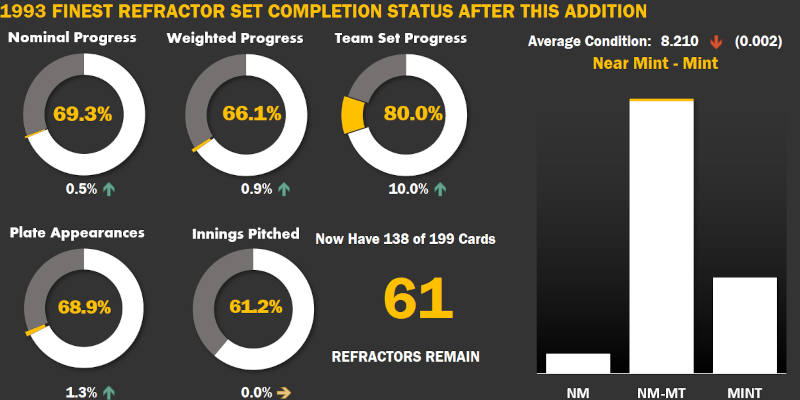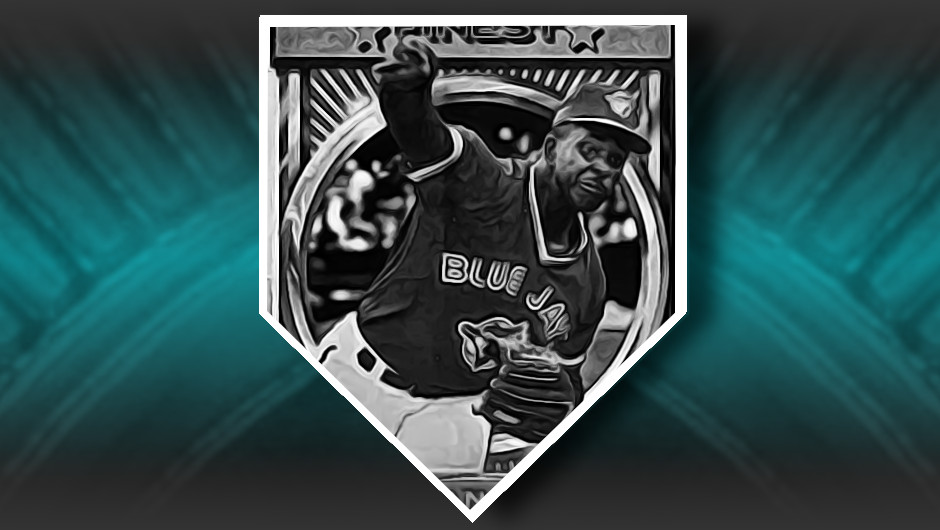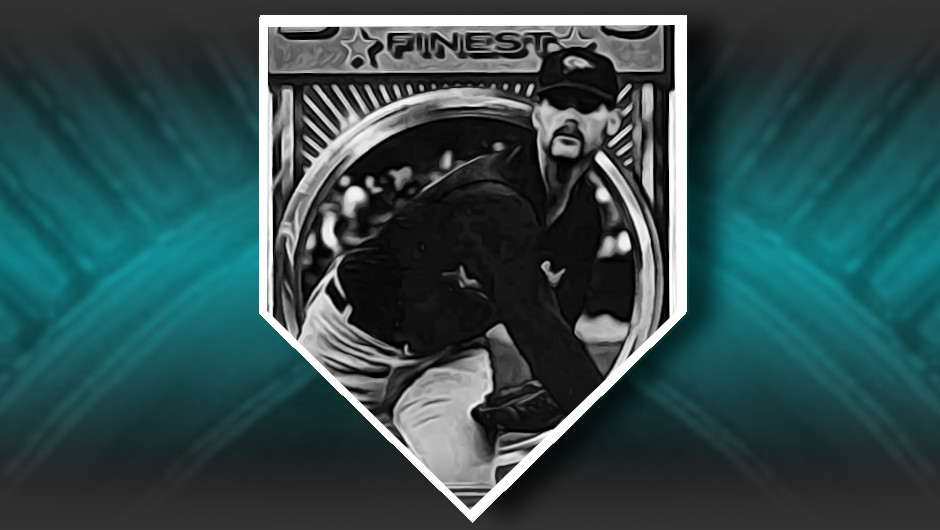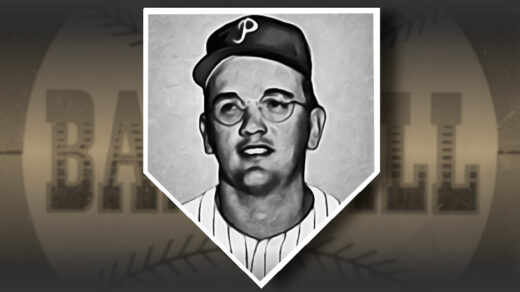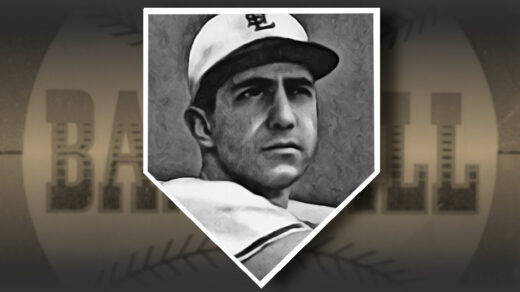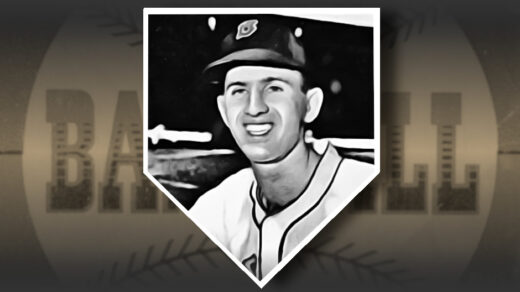Craig Biggio is not the first Astros player to make it to Cooperstown, that honor would go to Robin Roberts who played a few games for Houston in 1965. Biggio, the guy who played more games than anyone else in team history, became the first to wear an Astros hat on his Hall of Fame plaque. A growing appreciation for statistical edges and a few big, round counting stats made Biggio a popular choice among voters. I admit that as a card collector in the 1990s the Hall was not a place that immediately jumped to mind when thinking of the Astros. If anybody was going to have that kind of career, it was to be the home run hitting Jeff Bagwell, not Biggio.
Instead, I focused on Biggio’s versatility early in my collecting efforts. He is pictured as a rookie on one of the few good looking cards in 1989 Donruss as a maskless catcher watching a play unfold. He played several hundred games behind the plate before moving to second base where he spent most of his career. From time to time he would shift to various outfield positions, ultimately playing several seasons’ worth of games in the outfield. Catchers who can hit and run are a rare breed and Biggio’s successful transition to other positions made him a player to occasionally check in on.
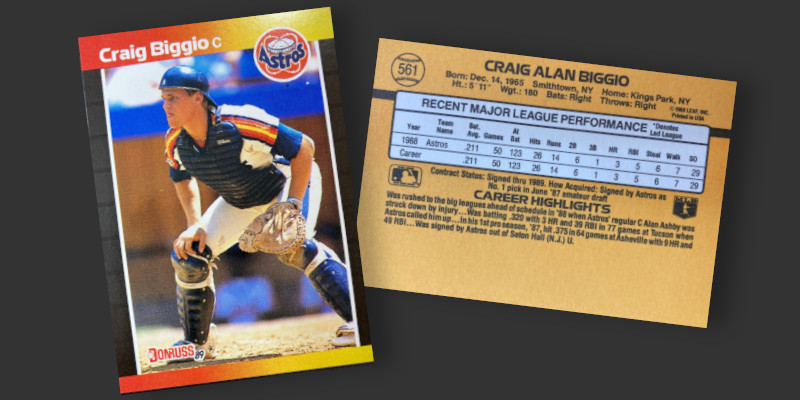
This sort of neglect was par for the course at the time. Biggio would often be described as a good player but didn’t really have many ardent collectors following his cards or career. It wasn’t cool to follow Biggio.
This is the cue for Bill James to push up a pair hipster glasses and proudly proclaim, “I liked Craig Biggio before it was cool.” He pretty much said this when he named Biggio as the fifth greatest second baseman in the history of baseball in the 2001 edition of The New Bill James Historical Baseball Abstract. He ranks him higher than Nap Lajoie, a name frequently in the running for the title of best in the game’s history of that position. This ranking was probably the most controversial one in the book, prompting a large scale reevaluation of Biggio’s career to date. Given James’ reputation for winning baseball arguments, such an assertion was certainly noteworthy and worth listening to.
Here’s what he had to say. With a good batting average, a decent number of stolen bases, and a position in the lineup benefitting from the 1-2 punch of Bagwell and Ken Caminitti, Biggio was already a “good” player. James proffered that Biggio also exceled at a wide range of little things that cumulatively made him as valuable to a team as Ken Griffey, Jr. Biggio could hit 20 homeruns, dozens of doubles, and leg out a few timely triples in an average season. Strikeouts came at below average rates. Biggio could effectively steal first base by walking often and nearly setting the career record for being hit by pitches. His career batting average of .281 was 32 points lower than Nomar Garciaparra but his on base percentage (.363) was 2 points higher. Once on base he would turn these synthetic singles into doubles by swiping the next bag. Not only did he steal over 400 bases in his career, he do so with one of the game’s highest success rates. He even helped his team in ways that didn’t show up on the back of baseball cards. Biggio rarely grounded into double plays, keeping rallies going rather than snuffing them out. Simply put, he didn’t waste outs and turned little gains into bigger ones. James’ win-shares ranking system (similar to popular WAR metrics) effectively said Biggio was just as good as Griffey and his versatility allowed teams more flexibility in getting him into a lineup. For these reasons, coupled with the sports’ general disinterest in Biggio, made him James’ favorite player of the era.
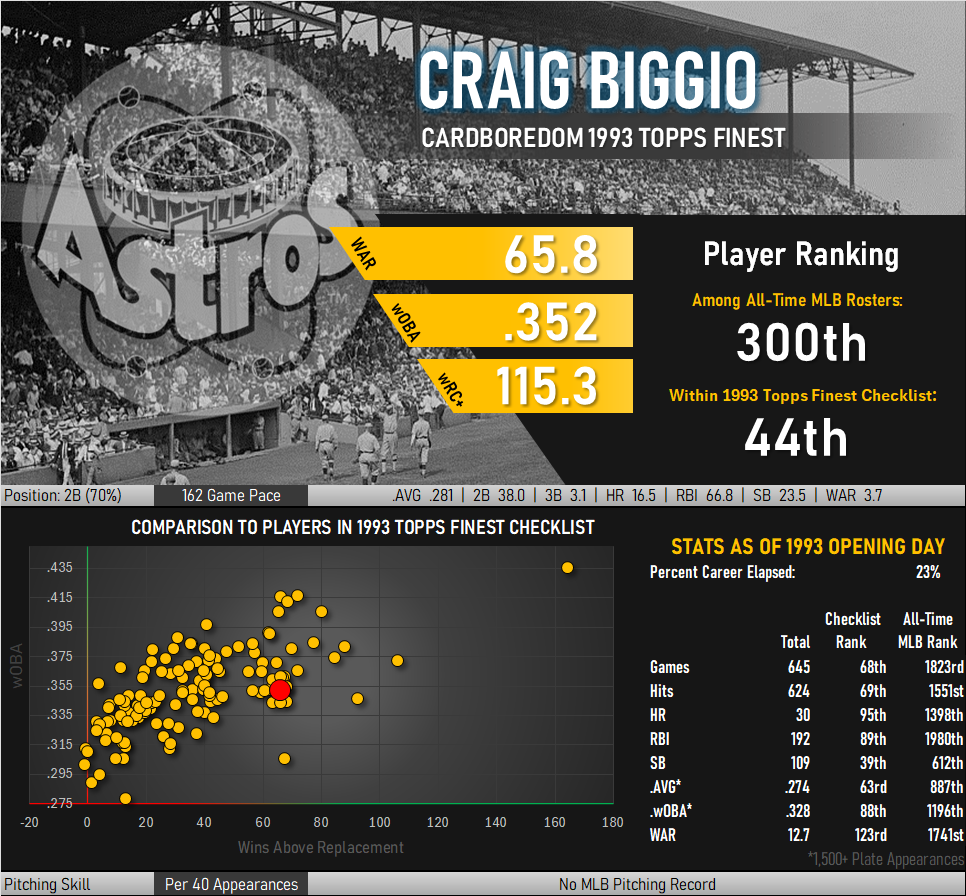
With the conclusion of Biggio’s career and the lessening of Biggio’s status as an underappreciated player, James revisited the topic The Bill James Gold Mine 2008. His argument is fully fleshed out in those pages, along with a reevaluation leading to James lowering his initial assessment.
1993 Finest Refractor #119
Wearing a clean uniform, I almost didn’t recognize Biggio on his ’93 Refractor. He is identified on the back as a second baseman. The previous year had been his first full season away from catching duties and the move looked permanent enough to avoid the dual position listing seen on a handful of other ’93 Finest cards. The card showed another Biggio quality: durability. The 1992 stat line on the card shows him playing in all 162 games.

